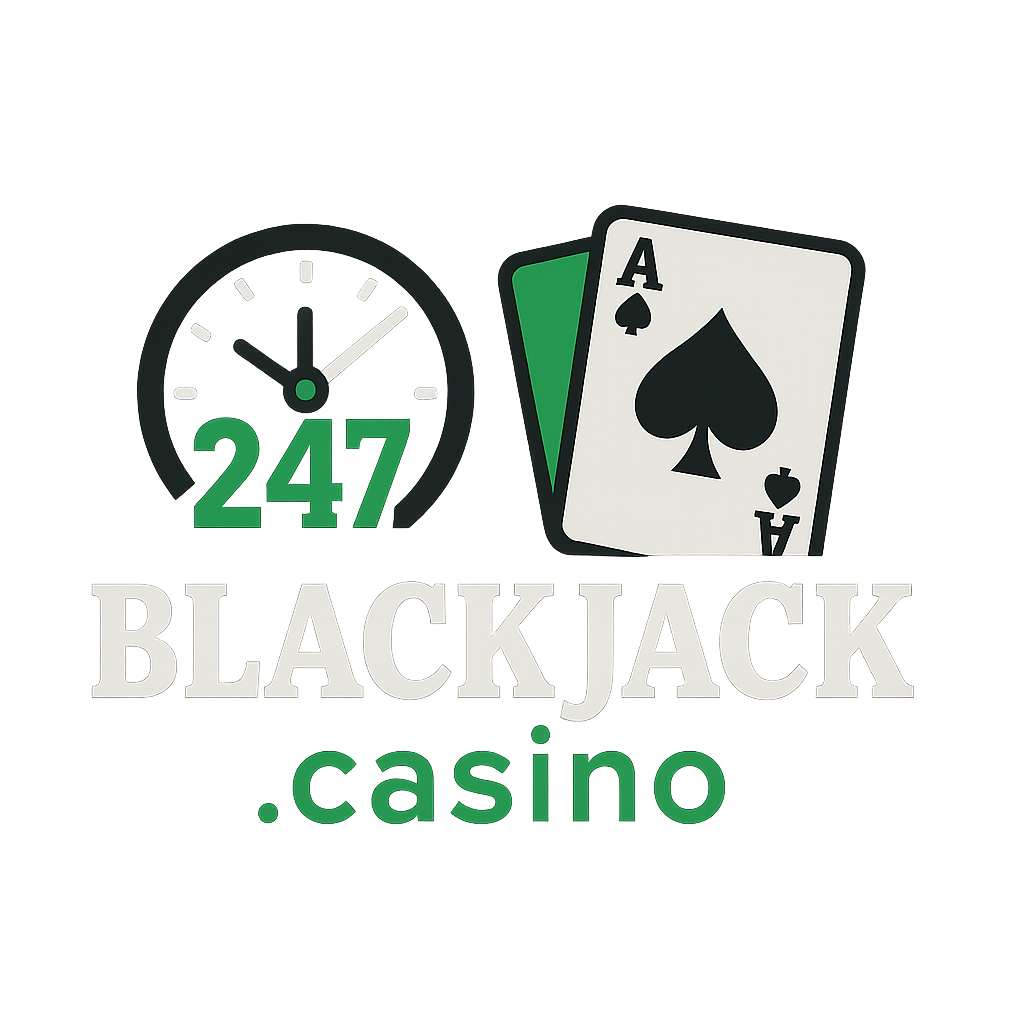Blackjack, also known as “21,” is a casino card game where your objective is to beat the dealer. Beating the dealer means either:
You don’t bust (your hand stays at or below 21) and your total is higher than the dealer’s total
Or the dealer busts while you stay under or at 21
You are not competing against other players; each player plays independently against the dealer. A hand totaling exactly 21 from the first two cards is called a blackjack or “natural.” This hand beats all dealer hands except a dealer blackjack and pays a bonus. Blackjack has one of the lowest house edges in the casino when played correctly, which is why strategy matters.
Card Values & Hand Types
Understanding how cards are valued and how to interpret “soft” versus “hard” hands is fundamental.
| Card Type | Value |
|---|---|
| 2 – 10 | Face value (2 = 2, 3 = 3, …, 10 = 10) |
| J, Q, K | 10 each |
| Ace | 1 or 11, whichever benefits the hand |
Hard total: a hand with no Ace, or where the Ace counts as 1 because counting it as 11 would bust.
Soft total: a hand containing an Ace that can be counted as 11 without busting. For example, Ace + 6 is a soft 17 because the Ace counts as 11. If you draw a 10, the Ace shifts to 1, and you have 17.
Soft hands offer flexibility. Hard hands are rigid.
Examples:
Soft 18 = Ace + 7
Hard 18 = 10 + 8, or Ace + 7 when Ace must count as 1
The Deal & Table Flow
Here’s how a standard blackjack round works step by step:
Place your bet
Each player places their bet within the table limits.Cards are dealt
The dealer gives one card to each player and one to themselves (face up), then repeats. The dealer’s second card (the “hole card”) is usually face down.Check for blackjack
If the dealer’s upcard is a 10-value or Ace, they may peek for blackjack. If the dealer has blackjack, the hand ends immediately. In some European rules, the dealer does not receive a hole card until all players act.Players act
Starting from the dealer’s left, each player can hit, stand, double, split, or surrender if the rules allow.Dealer plays
Once players finish, the dealer reveals their hole card and plays according to fixed rules.Resolve bets
If you bust, you lose immediately. If the dealer busts, you win. If both stay under 21, the higher total wins. A tie is a push.Next round
Cards are cleared, and the next hand begins.
Hand signals for live games:
Hit: tap the table or scratch the felt
Stand: wave your hand over your cards
Double: place a second equal bet beside your first
Split: place a second equal bet beside your first
These gestures help dealers and cameras confirm your decisions.
Player Actions
Hit
Request another card. You can hit multiple times until you either stand or bust.
Stand
End your turn and take no more cards.
Double Down
Double your original bet, receive one more card, and automatically stand. Some games allow doubling on any two cards; others restrict doubling to specific totals like 9, 10, or 11. Games allowing more flexibility slightly improve player odds.
Split
If your first two cards are the same rank (for example, 8 + 8 or K + K), you can split them into two hands by matching your original bet. Each hand is then played separately.
Rules vary by casino. Some allow resplitting, doubling after splits, or drawing to split Aces. Others don’t. Liberal rules benefit the player.
Surrender
Available in some casinos. You forfeit your hand and recover half your bet.
Early surrender: before the dealer checks for blackjack
Late surrender: after the dealer checks and doesn’t have blackjack
Surrender slightly reduces the house edge when used correctly.
Insurance / Even Money
If the dealer shows an Ace, you may take insurance, which is a side bet up to half your original bet that the dealer’s hole card is 10. It pays 2:1 if true, otherwise it loses.
Insurance is not recommended under standard strategy.
Even money occurs when you have blackjack and the dealer shows an Ace. You can take a guaranteed 1:1 payout instead of the usual 3:2. It’s mathematically identical to insurance and generally not worth it.
Dealer Rules & Soft 17
Dealers follow strict rules and cannot make decisions. They must draw until reaching at least 17. The key difference across casinos is whether the dealer stands or hits on a soft 17 (an Ace + 6).
S17 (stand on soft 17): better for the player
H17 (hit on soft 17): worse for the player, adding roughly 0.2 to 0.3% to the house edge
When choosing a table, look for signage that says “Dealer stands on all 17s.”
In European or “no hole card” games, the dealer doesn’t check for blackjack until after players act, which can make doubling or splitting riskier.
Payouts & Pushes
| Outcome | Payout |
|---|---|
| Standard win | 1:1 |
| Blackjack (natural 21) | 3:2 |
| Push (tie) | Bet returned |
| Insurance win | 2:1 |
If both you and the dealer have blackjack, it’s a push. If you bust, you lose regardless of the dealer’s result. Always look for tables that pay 3:2 for blackjack. Avoid 6:5 tables as they increase the house edge by about 1.4%.
Pushes happen when both player and dealer have the same total, and the bet is returned.
Rule Variations & House Edge
Different casinos apply variations that subtly affect the house edge. Understanding these differences helps you choose better tables.
| Rule Variation | Effect on Player |
|---|---|
| Blackjack pays 6:5 instead of 3:2 | −1.39% |
| Dealer hits soft 17 (H17) | −0.22% |
| No hole card / no peek | −0.11% |
| No double after split | −0.12% |
| No resplit aces | −0.08% |
| Draw after splitting aces allowed | +0.19% |
| Early surrender | +0.39% |
| Fewer decks (single, double) | +0.48% (approximate) |
To summarise:
Prefer 3:2 payouts over 6:5
Prefer S17 over H17
Fewer decks are generally better
Liberal doubling and splitting rules favour players
Avoid no-peek or restricted games when possible
Basic Strategy
Basic strategy is the mathematically correct way to play every hand against every dealer upcard. Using it consistently lowers the house edge to around 0.5% or less.
General Basic Strategy Principles
Always split Aces and 8s
Never split 10s or 5s
Stand on hard 12–16 if dealer shows 2–6
Hit on hard 12–16 if dealer shows 7–Ace
Double 10 against 9 or less
Double 11 unless dealer shows Ace
Never take insurance
For soft hands, hit or double more aggressively
Example Scenarios
You have 16, dealer shows 6 → Stand
You have 12, dealer shows 2 → Stand
You have Ace + 6, dealer shows 2 → Hit
You have Ace + 6, dealer shows 5 → Double
Basic strategy charts can vary slightly by rule set (S17 vs H17, decks used, doubling rules). Most online blackjack trainers or calculators can tailor the chart to your game.
Table Etiquette
Whether in a physical casino or a live dealer room, proper behaviour makes the game smoother for everyone.
Use clear hand signals along with your verbal decisions
Keep chips neat and bets visible
Don’t touch your cards in face-up games
Don’t offer advice to other players mid-hand
Respect the dealer and other players
Don’t celebrate or complain excessively
A courteous, focused player gets respect from both the dealer and fellow players.
Online vs Live Blackjack
Online (RNG) Blackjack
Cards are generated by software
You can usually pause or play at your own pace
Rules may vary between games so always check the paytable
Lower minimum bets but sometimes less favourable rules
Live Dealer Blackjack
Real dealers and physical cards streamed to your device
You interact via chat or buttons
More immersive experience but usually higher minimum bets
Same core rules apply so check for S17 and payout details
Avoid side bets unless for entertainment, as they often carry higher house edges than the main game.
Responsible Play
Even with strategy, blackjack involves variance. Play smart and within limits.
Set a budget before you play
Bet small portions of your bankroll per hand
Never chase losses
Take breaks regularly
Know when to quit after big wins or losses
Only play at licensed, reputable casinos
Use self-exclusion tools if gambling becomes stressful
A clear head and discipline are your most important strategies.
Frequently Asked Questions
Is blackjack skill or luck?
Both. Luck determines which cards appear, but skill determines how well you manage each situation. Using basic strategy minimises losses over time.
Why is 3:2 better than 6:5?
3:2 pays more for blackjack and reduces the house edge by about 1.4% compared to 6:5 tables.
Should I take insurance?
No. Insurance is a side bet with negative expected value.
What is surrender?
Surrender lets you fold your hand early and recover half your bet. It’s useful in tough spots like hard 16 vs dealer 10, if the casino allows it.
How many decks should I play?
Fewer decks slightly favour the player, though casinos often offset this with tighter rules.
Does dealer hitting soft 17 matter?
Yes. Dealer hitting soft 17 increases the house edge by around 0.2%.
What’s the typical house edge?
With good rules and basic strategy, between 0.3% and 0.8%.
Can I use a chart while playing?
Online, yes. In physical casinos, no. Strategy charts are great for learning before you play.
References & Further Reading
Wizard of Odds – Blackjack basics and rule variations
Wikipedia – Blackjack rules and variants
Bicycle Cards – How to play blackjack
Winstar Casino – Beginner’s guide to blackjack strategy

